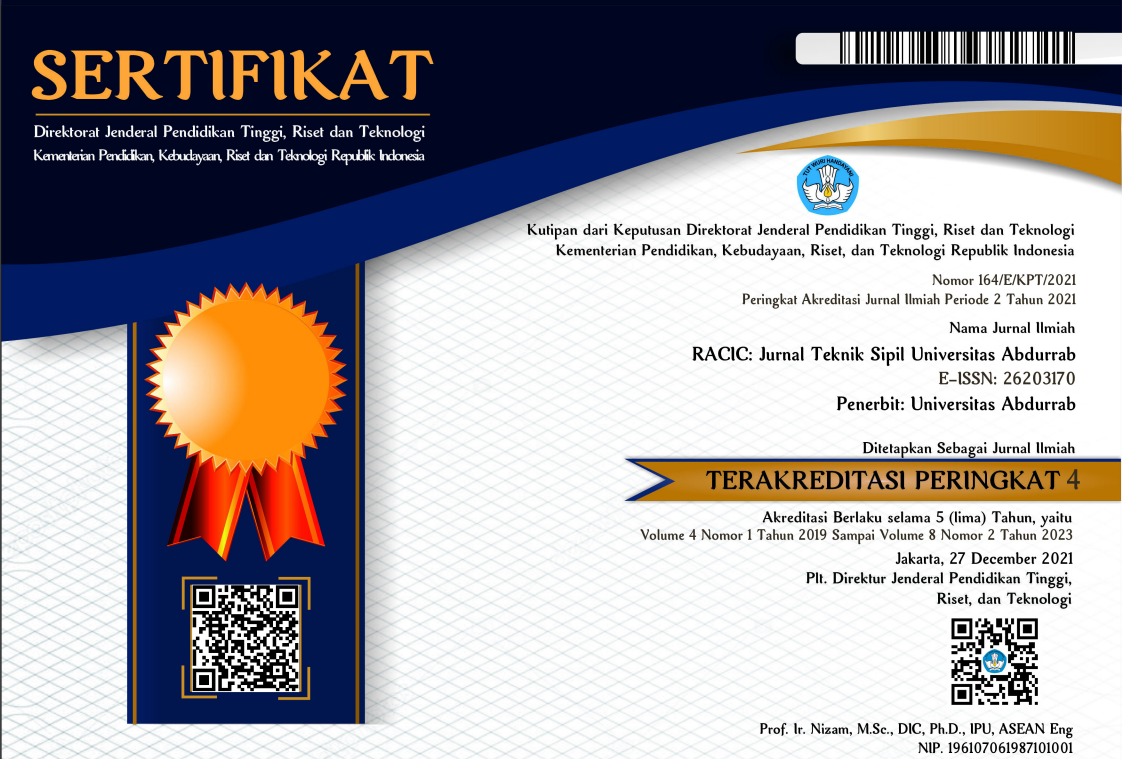ANALISA PERBANDINGAN DUA MEREK SEMEN DENGAN KEBERSIHAN MATERIAL TERHADAP KUAT TEKAN BETON K-250
Keywords:
Concrete Quality 1, Concrete Material Cleanliness 2Abstract
Concrete is a material that is often used in building construction, because concrete is easily made in accordance with the desired shape and the material used is widely available in nature. The materials used in making concrete are sand, gravel / split, water and cement as a binder. Concrete materials are obtained in nature mixed with other substances such as plants, plastics, mud and others. The quality of concrete is influenced by the materials used and the cleanliness of the material. This study examines the effect of material cleanliness on the quality of the concrete produced. The sand material comes from Bingkuang lake in Kampar district, this stone from stone in Kampar district, water from bore wells and adhesives is used from two suppliers. The planned concrete is K-250. Cleanliness of the material by washing and not being washed. The age of the concrete was analyzed at 7 days, 14 days and 28 days. The results of analysis using brand A binder with the cleaned material obtained concrete quality K-281.75 and using unclean materials obtained concrete quality K-217.15. There was a reduction in concrete quality of 22.93%. The analysis results using brand B binder with cleaning agent, K-303,84 concrete quality and using uncleaned material, K-203,40 concrete quality. There was a decrease in the quality of concrete by 33.06%. Thus the use of non-clean materials can reduce the quality of concrete by 20-30%.
Downloads
Downloads
Published
Issue
Section
License
1. Copyright of all journal manuscripts is held by the RACIC : Rab Construction Research
2. Formal legal provisions to access digital articles of electronic journal are subject to the provision of the Creative Commons Attribution-ShareAlike license (CC BY-NC-SA), which means that RACIC : Rab Construction Research is rightful to keep, transfer media/format, manage in the form of databases, maintain, and publish articles.
3. Published manuscripts both printed and electronic are open access for educational, research, and library purposes. Additionally, the editorial board is not responsible for any violations of copyright law.
licensed under a Creative Commons Attribution-ShareAlike 4.0 International License.





